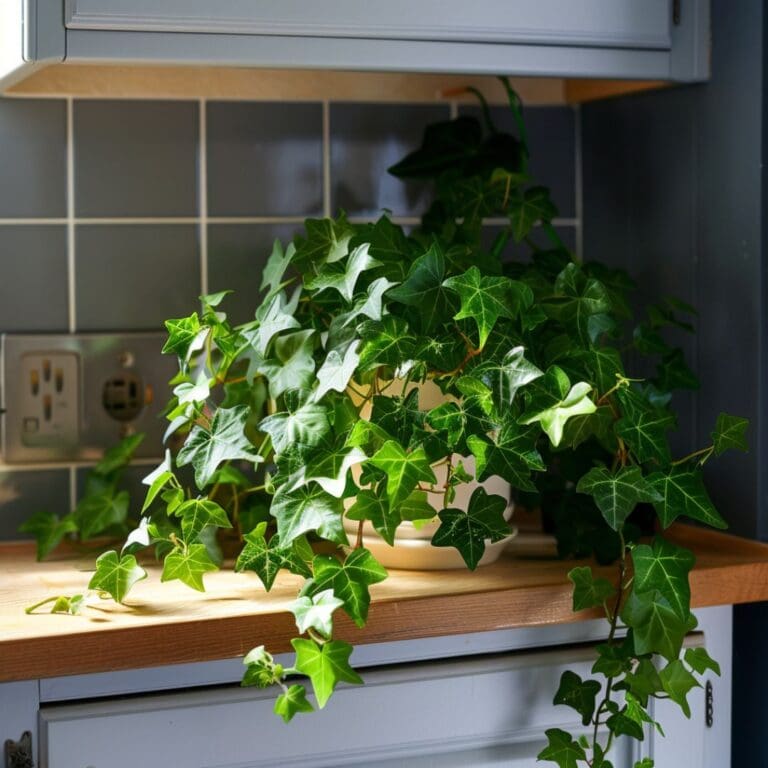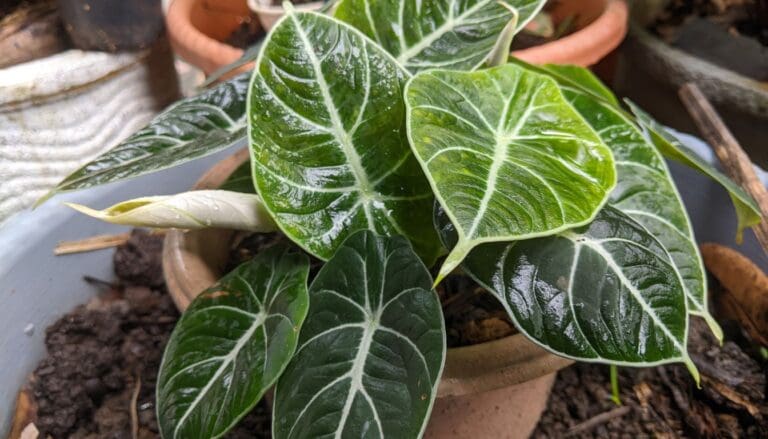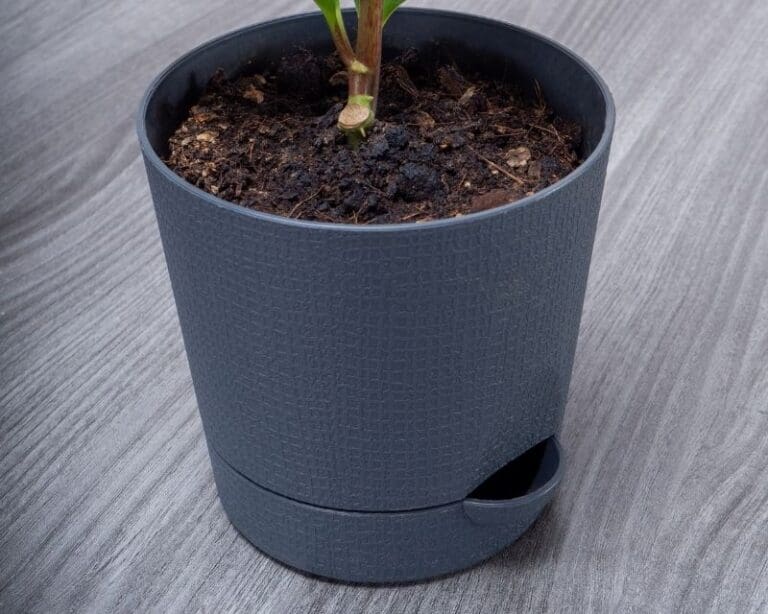What Kind Of Soil For Boston Fern? (Ideal Soil Mix+How To Make)
Boston ferns are one of the classic houseplants universally admired for their bushy, evergreen foliage and low maintenance. They grow swiftly provided they get the right conditions for their growth.
Boston ferns require well-draining and loamy soil that does not remain soggy but can hold moisture for some time as ferns need constant moisture. An equal mix of potting soil, peat moss, perlite, and sand should be ideal for boston fern. Make sure to maintain a pH level of 6.0-6.5 for them.
Plant owners sometimes have difficulty understanding the correct soil mix for this plant which we will discuss. Getting the ideal potting soil for your plant is extremely important because it lives on the soil.
This article will look into the favorable soil type required to give Boston ferns a suitable home.

Please note: Simplify Plants is reader-supported. Some links in the post are affiliate links and I get a commission from purchases made through links in the post.
Important of choosing the right soil mix for Boston fern
Boston ferns need light and well-draining soil so that soil does not stay heavy and soggy.
It is crucial to get this balance right between the soil, which is well-draining and, at the same time, capable of holding water.
Overwatering is one common cause of Boston ferns dying because plant owners make the mistake of watering without checking the moisture.
Clogged soy soil causes root rot in the plant.
So, having well-draining soil is necessary to have healthy Boston fern.
Boston ferns also require some moisture in the soil, and if they get dehydrated, it seriously affects their health.
Another important factor is to choose a nutrient-rich soil so that the plant gets all the nutrients essential for healthy growth.
The soil should have proper air circulation so that roots do not feel suffocated, and air circulation also prevents fungal infestations.
Therefore preparing a soil that is well-draining, loamy, able to retain moisture, nutrient-rich, and has good airflow is important for your Boston fern.
Using the wrong soil mix for your Boston fern – Signs

If you use the wrong potting soil or regular garden soil for your Boston fern, the plant will show various signs of stress.
The Boston fern will not grow well and will encounter several problems.
Let us discuss some of the signs your Boston fern shows if the soil mix is unsuitable.
- Discolored leaves: The leaves show the first signs of stress. If the soil retains excess water or gets dehydrated quickly, the leaves will show the impact. Using wrong and unsuitable potting soil makes the leaves lose their color.
- Falling leaves: If the problem persists, the leaves start to fall off.
- Stunted growth: The plant’s growth will seriously be impacted if the soil is unfit for the plant.
- Foul-smelling soil: If the soil is too heavy and retains too much water, the soil will not dry out, leading to root rot and pests. This can make the soil foul-smelling.
What type of soil is best for Boston fern?
We already discussed what kind of soil is not right for the Boston fern and the signs of stress that the plant would exhibit.
Now let us understand which type of soil you should get for your Boston fern.
And what factors you should remember while preparing the soil.
Proper drainage
The first and foremost property you must consider while preparing your soil mix is it should be well-draining.
Root rot caused by soggy, clogged soil is one of the major reasons for the death of Boston ferns.
They cannot grow in soggy soil, and making the soil well-draining is one of the most vital requirements.
If you mistake using the regular garden soil for your Boston fern, you will harm the plant.
Because that soil is extremely clayey and heavy, it can hold all the unnecessary water, leading to pest infestations and fungal diseases.
If not cured on time, these infestations can lead to root rot, which is irreversible and can kill your plant.
Soil with high clay content becomes heavy and unsuitable for Boston ferns.
In some areas, the soil naturally tends to be clayey.
If so, you must add sand or brick powder to make it looser.
Boston ferns prefer loamy soil, which is neither clayey nor sandy.
This kind of soil can retain moisture without holding excess water.
If the soil is heavy, you can add certain components to make it well-draining and improve its texture, eliminating drainage problems.
Moisture retention
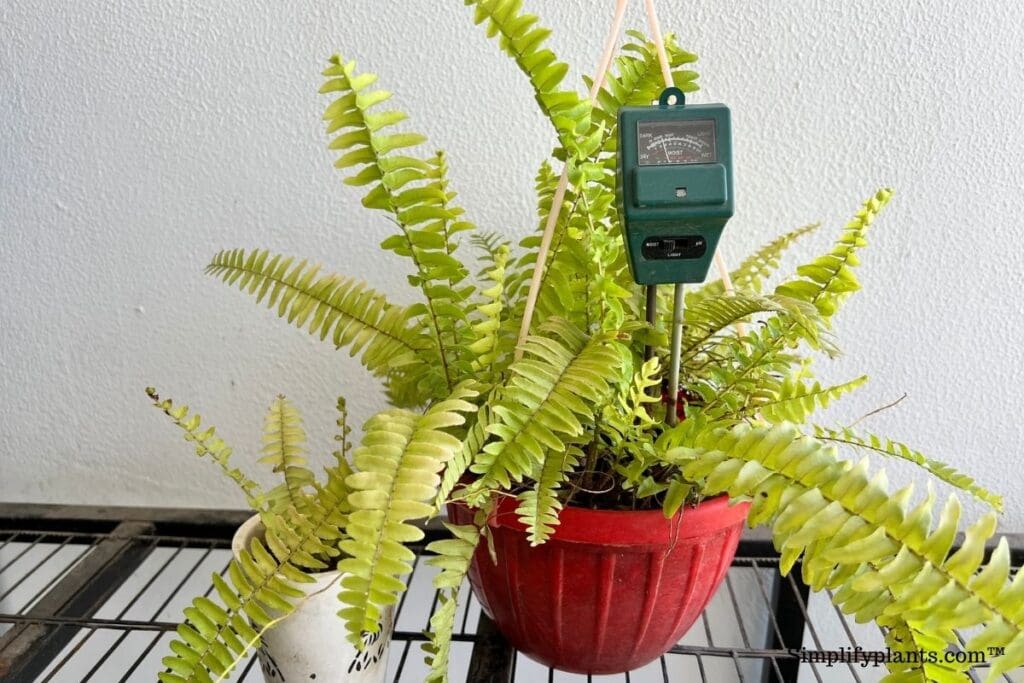
Boston ferns love moisture, and one of the most crucial qualities of the potting soil used for this plant is to make it able to retain moisture.
A soil that drains all the water and moisture too fast is unsuitable for your Boston fern.
Therefore, it is important to balance moisture retention and drainage.
Mulching is a popular and effective way to make the soil retain moisture by not allowing water evaporation from the soil.
In this, we cover the soil with a thick layer of organic matter like leaves, straw, cardboard, or bark.
This will moderate the soil temperature, prevent excess evaporation and hold moisture longer.
Watering deeply less frequently is more helpful in preserving moisture than watering frequently and shallowly.
This helps the roots to grow stronger and healthier.
Adding organic material helps to improve the structure, aeration, and health of the soil.
Some matters that you can mix in your soil while preparing it for your Boston fern are:
Nutrient-rich soil
The soil you prepare for your Boston fern should be fertile and rich in nutrients.
Therefore having fertile soil is important.
You have to remember that with time as you keep watering the plant, the necessary nutrients will gradually wash off.
Therefore, you should prepare nutrient-rich soil and repot the plant with a fresh one every 2-3 years.
Proper air circulation
Just like humans, your plants also need aeration.
Proper air circulation in the roots is very important to stay healthy.
Using soggy and heavy soil obstructs the flow of air in the roots, which suffocates the roots.
Lack of aeration in the soil leads to pest infestations and fungal growth.
To make the soil light and airy, you can add:
All these will help in making the soil loose and improve air circulation.
Maintain the correct pH level
Boston ferns need a slightly acidic soil with a 6.0 to 6.5.
If the pH of the soil is unsuitable for the Boston fern, its health and growth can deteriorate.
It is important because it determines the availability of almost all essential plant nutrients.
You can check the pH of the soil by using a pH measuring kit, and if the pH is lower than the required value, you can add limestone powder to increase it.
If the value is higher, you can add elemental sulfur, aluminum sulfate, or sulphuric acid to reduce it.
What is the best soil for Boston fern?

We have discussed the different factors and importance of soil mix for Boston ferns.
Let’s look into a few soil mixes you can prepare for your Boston fern.
Recipe 1
Ingredients:
- 1 part peat moss
- 1 part perlite
- 1 part potting soil
- 1 part sand
Uses:
- Potting soil will provide nutrients to the plant.
- Peat moss will help the soil in retaining moisture.
- Perlite will help in moisture retention and aeration.
- Sand will help with drainage.
Recipe 2
Ingredients:
- 1 part coco coir
- 1 part orchid bark
- 1 part perlite
- 1 part soil
Uses:
- Coco coir helps in aeration and holds moisture.
- Orchid bark helps retain moisture and releases it slowly, so Boston fern does not get dehydrated.
Recipe 3
Ingredients:
- 1 part loamy potting soil
- 1 part sand
- 1 part fir bark
- 1 part vermiculite
- A handful of charcoal
Uses:
- Bark will retain moisture.
- Vermiculite will retain water.
- Charcoal has anti-bacterial properties.
You can help your Boston fern grow healthily will these soil mixes, which will help to give all the factors needed for the plant.
Can you use succulent soil for your Boston fern?

Succulent plants grow in deserts and semi-arid areas.
They are used to growing in dry, coarse soil, while Boston ferns are tropical plants that need a lot of moisture around them.
Succulents love soil that does not hold moisture and is well-draining, while Boston fern’s requirements are very different.
So if you decide to use only the succulent soil to grow Boston fern, it will not help the plant.
But you can amend the succulent soil to suit the needs of Boston fern.
By adding some peat moss and potting mix to the succulent soil, you can make it suitable for your Boston fern.
This way, they will be able to retain moisture and also be well-draining.
Where should I put my Boston fern?
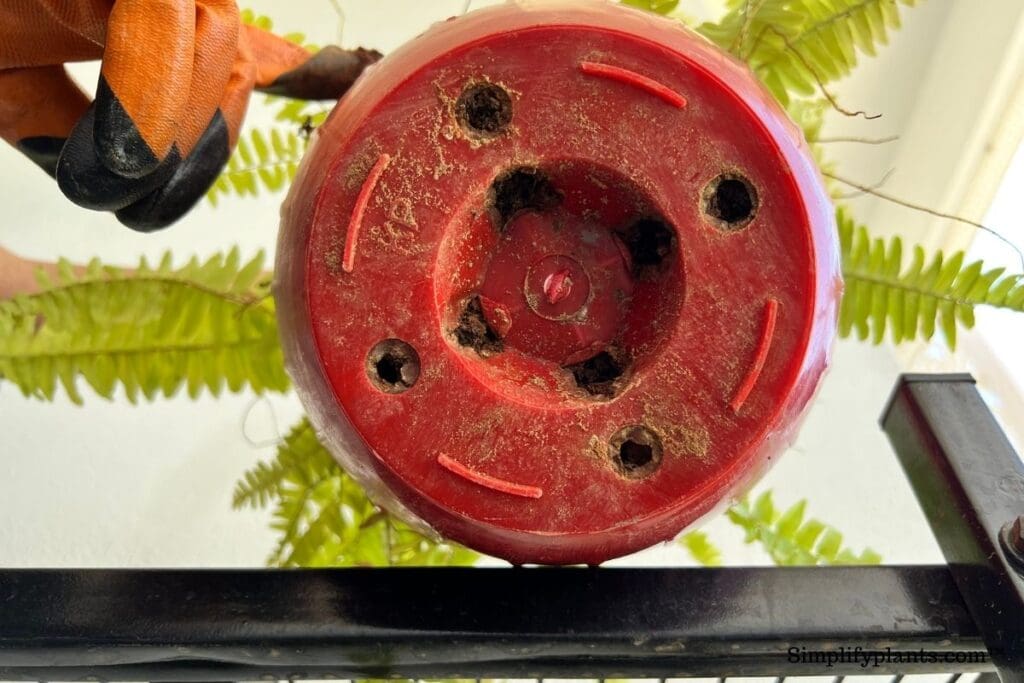
Plant your Boston fern in a pot with drain holes to let excess water flow out.
Do not use pots without drainage holes to plant your Boston ferns.
Make sure the new pot size is not more than 2 inches bigger than the present pot.
An extra big or small pot for the plant can impact its growth and health.
How to know your Boston fern needs repotting?
Your Boston fern will need to be repotted when it gets root-bound.
Look for the signs of the plant if it needs a bigger pot:
- Stunted growth
- Pale leaves
- Visible roots on top of the soil’s surface and roots coming out of the drain holes.
- Dehydrated plant
- Water flows out of the pot as soon as you water it because the roots start to absorb the soil.
How to repot your Boston fern?

Let us understand the procedure you should follow while repotting your Boston fern.
- Water the Boston fern 1-2 days before repotting. When the soil is slightly damp, it will come off the pot easily.
- Choose the new pot for the Boston fern before starting the repotting process. Remember that the new pot should not be more than 2 inches bigger.
- Prepare the soil mix you want, keeping in mind the factors we have discussed above.
- You can cover the drainage holes of the new pot with rocks so that the soil does not drain out with the water.
- Take the Boston fern and gently pull it out from the pot. If the plant is root-bound and does not come out, tap the bottom of the pot with your hand to bring the plant out. Use a sterilized knife to loosen the soil, and do not forget to sterilize it after use.
- If you see any dead roots or infected roots, trim them away. Cut off the dead or yellow leaves.
- Once the Boston fern is out of the pot, untangle the roots gently and loosen up the root ball to spread the roots easily in the new pot. And this gives the roots more chances to breathe and makes it easier for the plant to grow in the new soil.
- Take the new pot, fill the pot with the soil mix, place the Boston fern in the new pot at the center, and start adding potting mix from the sides. Tap the pot from the sides to help the soil settle down inside the pot.
- Once done, water the Boston fern generously until you see the water coming out of the drainage holes.
Aftercare
Once you have completed the repotting process, you still have to look after the Boston fern to see how it is doing.
- Place the plant in a bright and airy spot away from direct rays of the sun.
- Wait for the soil to get around 25% dry before watering it again.
- Fertilize the plant in the growing season.
- Maintain the correct temperatures and proper humidity to help the plant grow faster.
Final words
Since choosing the correct soil mix makes or breaks your plant, you must take time to understand the correct requirements of the Boston fern and prepare the ideal soil mix accordingly.
Going through this article must have given you the idea of what kind of soil mix is ideal for the plant. A loamy, well-draining soil works best for Boston ferns. You can select any of the 3 soil recipes mentioned above and prepare it for your Boston fern.
Along with choosing the correct soil mix, take care of the other requirements of the Boston fern to help the plant thrive.
Reference: University of Florida, The University of Arkansas Division, Texas A&M University System, The University of Georgia, University of New Hampshire, Wikipedia, The Royal Horticultural Society.
Recommended Garden Supplies
| Product Image | Our Recommended Gardening Supplies | Check Offers! |
|---|---|---|
Top Top
Top
Top
Top
Top
Top
Top
Top | rePotme Houseplant and Tropical Classic Potting Soil Mix | Check Offer On Amazon |
 Top
Top
Top
Top
Top
Top
Top
Top | Espoma Organic Indoor Plant Food | Check Offer On Amazon |
 Top
Top
Top
Top
Top
Top
Top
Top | GooingTop LED Grow Light 6000K Full Spectrum Clip Plant Growing Lamp | Check Offer On Amazon |
 Top
Top
Top
Top
Top
Top
Top
Top | Soil Moisture Meter | Check Offer On Amazon |
 Top
Top
Top
Top
Top
Top
Top
Top | Govee Hygrometer Thermometer, Bluetooth Enabled! | Check Offer On Amazon |
 Top
Top | LEVOIT Humidifiers for Large Room(Best For Plants) | Check Offer On Amazon |
 Top
Top
Top
Top
Top
Top
Top
Top | Upgraded DIY Automatic Drip Irrigation Kit, 15 Potted Houseplants Support | Check Offer On Amazon |
 Top
Top
Top
Top
Top
Top
Top
Top | Stainless Steel Heavy Duty Gardening Tool Set | Check Offer On Amazon |
 Top
Top
Top
Top
Top
Top
Top
Top | Bonide Insecticidal Soap | Check Offer On Amazon |
 Top
Top
Top
Top
Top
Top
Top
Top | Bonide 32 oz Spray Neem Oil for Organic Gardening | Check Offer On Amazon |
 Top
Top
Top
Top
Top
Top
Top
Top | Garden Safe Fungicide | Check Offer On Amazon |

